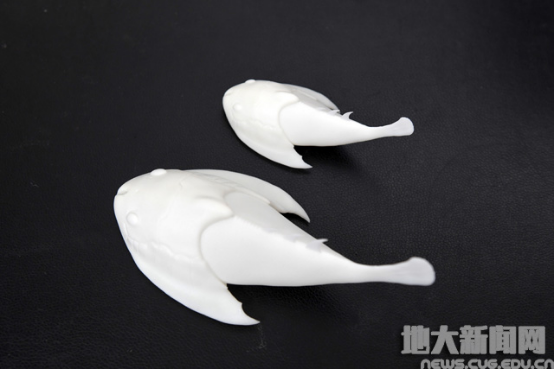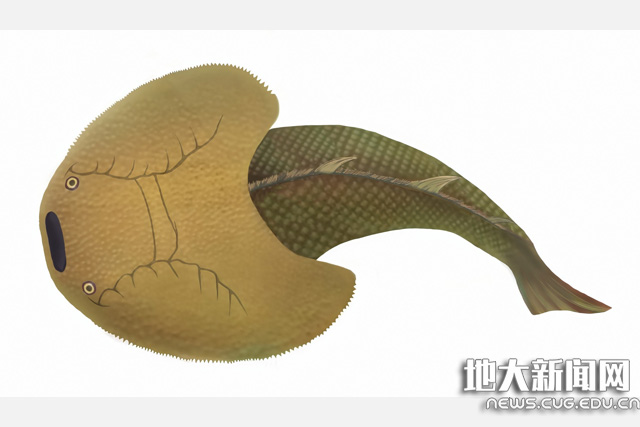“The oldest eugaleaspiform (Galeaspida) from the Silurian Fentou Formation (Telychian, Llandovery) of Wuhan, South China”,published in the Journal of Systematic Palaeontology on March 9, 2021, introduces a new genus of Eugaleaspidiformes (Galeaspida, Agnatha), Jiangxialepis gen. nov., from the Llandovery (Silurian) Fentou Formationin Wuhan, Hubei, China. The first author of the paper, LIU Yilong, is a senior from the School of Earth Sciences of CUG. The new genus dating back about 437 million years is the most primitive group of Eugaleaspidiformes (Shuyuidae). It broke the record of the earliest fish fossil in Wuhan, which appeared about 435 million years ago.

Model of Jiangxialepis
Majoring in Geology, he became fascinated with palaeontology in his sophomore year and started to explore the origins and evolution of early fish.This is not the first time that he has made significant discoveries in palaeontology.

LIU Yilong is hunting for fossils in the field
He goes to the suburbs of Wuhan three or four times every month and has taken home over 500 kilograms of stones. Besides, he has traveled in Hubei, Anhui, Zhejiang, Xinjiang and other places for fossil hunting in the past two years.
In May 2020, LIU had to stay in his hometown because of the Covid-19 pandemic. He still kept looking for fossils by video calls with his friends in Wuhan. One fossil caught his eye, and he had his friend deliver it to him. Then, he identified that it was a fossil of Hongshanaspis.

Model of Hongshanaspis
In 2019, he offered to go to western Junggar, Xinjiang with his supervisor where he discovered Bulongousteus. Bulongosteus is the first arthrodire reported from Xinjiang of northwest China, and also the first relatively complete aspinothoracid reported in China. Strikingly, Bulongosteus is the first aspinothoracid arthrodire found in the continental strata in the world.

LIU Yilong is researching in the lab
LIU not only loves geology himself but also tries to get more people interested in geology. He often introduces geological knowledgeto students of Nanwang Mountain Primary School and visitors in CUG Yifu Museum and Wuhan Museum of Unique Stones.
“I’ve been so lucky to have Prof. GONG Yiming and Associate Researcher ZONG Ruiwen as my teachers. Their encouragement and support always have a positive impact on me,” said LIU. “I’ve also been very appreciative of Dr. ZHU Min and his team from the Institute of Vertebrate Paleontology and Paleoanthropology. It is with their help that I’m beginning to make my mark in paleontology.”
(Edited and translated from the Chinese version)